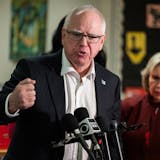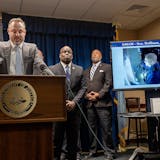Hybrid work is here to stay, and while many organizations are deciding how many days a week people can be remote and protocols for Microsoft Teams calls, they are forgetting to train staff on what human interactions should look like.
As a result, workers describe a “perceived frenzy.” Meetings are canceled without clear explanations. Managers are multi-tasking during calls, and workers detect that they are distracted.
While these are certainly not malicious acts, they create a “heads down, get your work done” culture where workers are at best hesitant and at worst afraid to express concerns, questions and ideas. In other words, there is less “psychological safety” for workers, according to research conducted last year by Peggy Kendall, professor of communication studies, and Triston Thomas, a student, at Bethel University in Arden Hills.
The research started after surveys showed managers saw less creativity from their teams when workers were remote.
More than 36 million employees will work remotely by 2025, according to research. While most love it, nearly a quarter of managers find their teams are less creative when they work from home.
In Minnesota, the Federal Reserve estimates one-third of workers are remote at least part-time. Other surveys show workers would quit if forced to work in the office 100% of the time.
So managers need to figure out how to make the arrangement work.
Blue Cross and Blue Shield of Minnesota, ranked 34th on the Star Tribune’s Top Workplaces list of large companies, has shifted the culture of achievement to be outcome-based instead of activity-based.
![A black bear stopped after crossing Big Bay Road on Madeline Island, the largest of the Apostle Islands in Wisconsin, on Monday, May 31, 2021. ]](https://arc.stimg.co/startribunemedia/PWNYGIY3WTSWDBOGOYD775DPP4.jpg?&w=80&ar=1:1&fit=crop)


